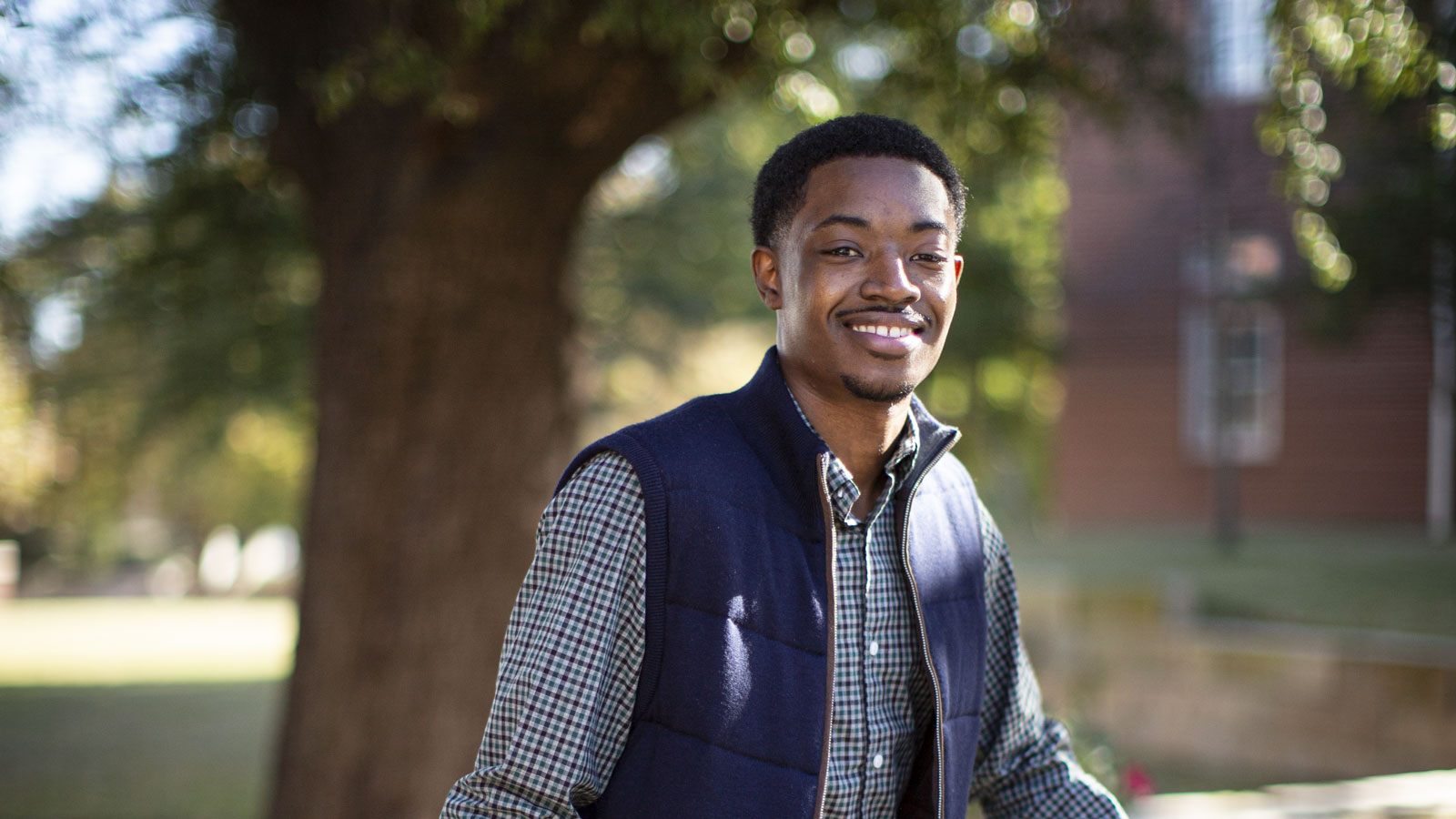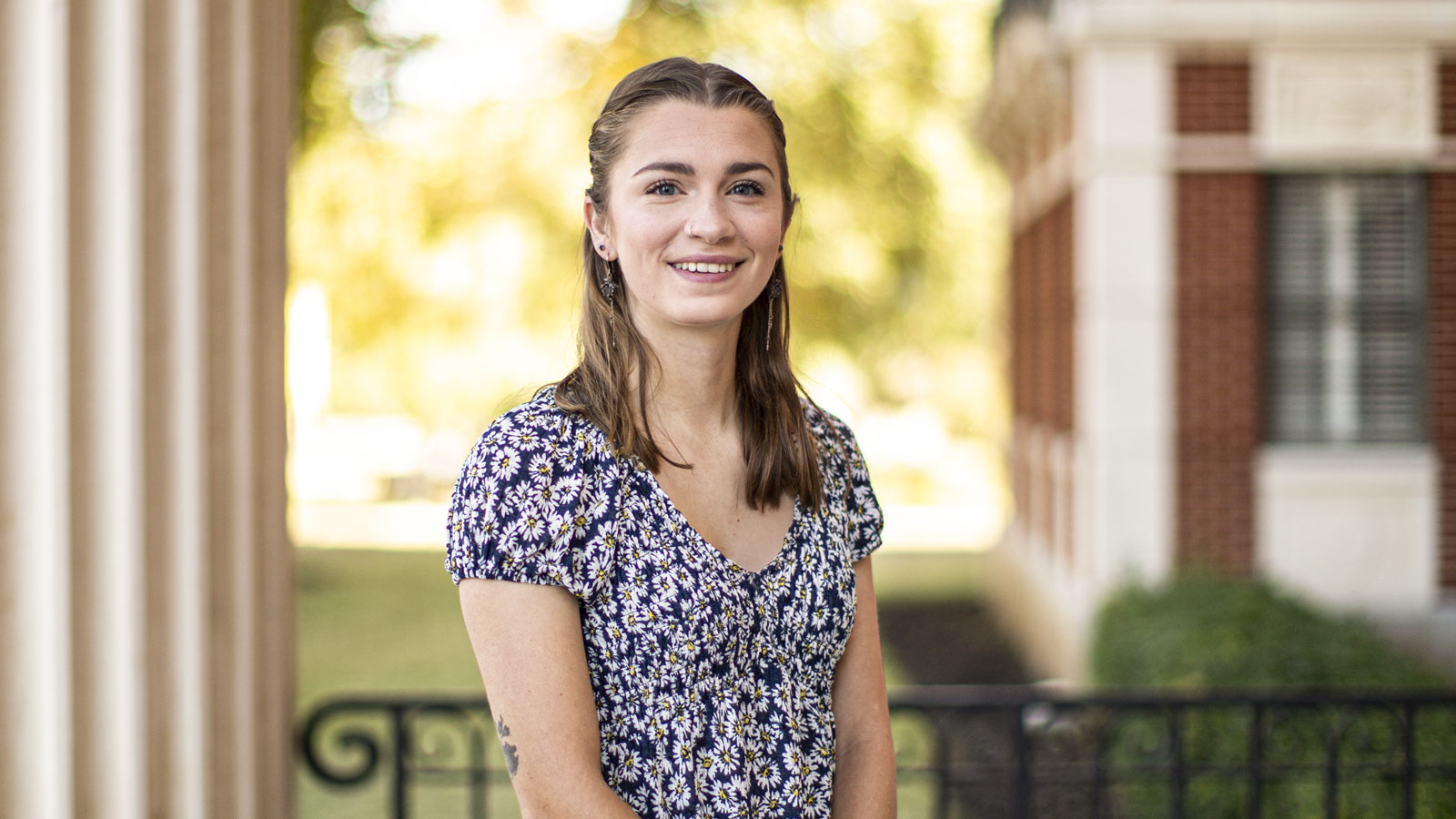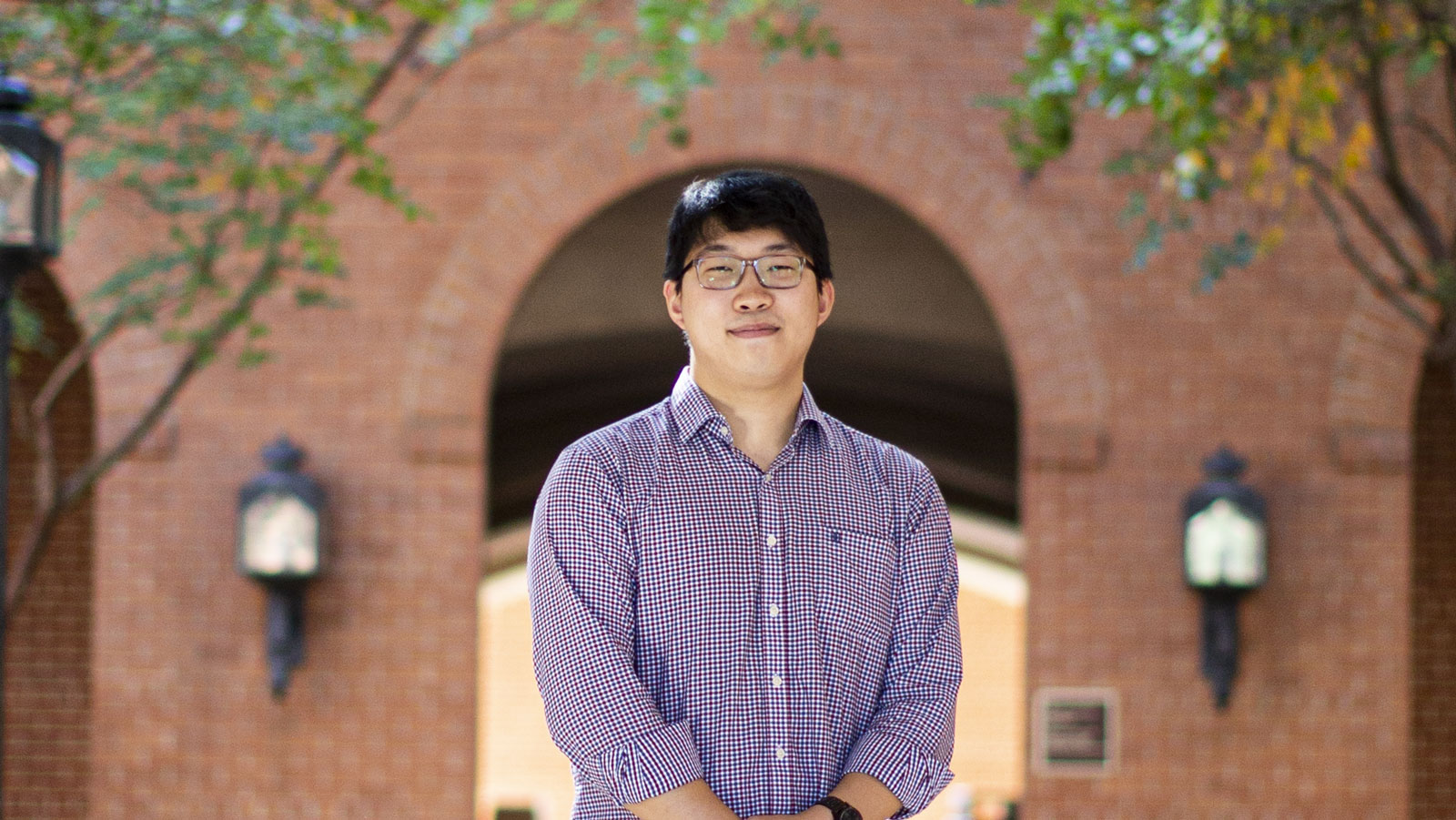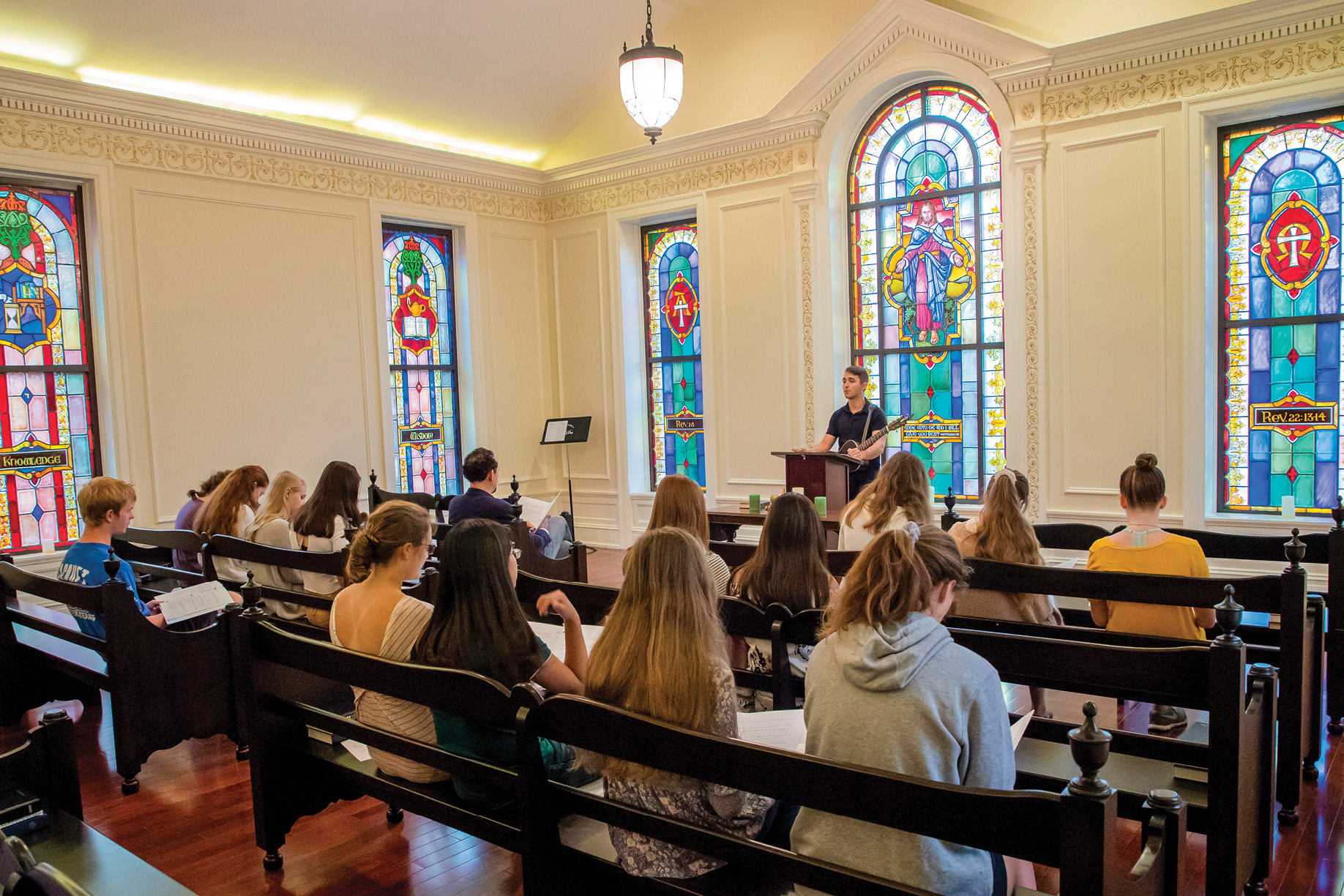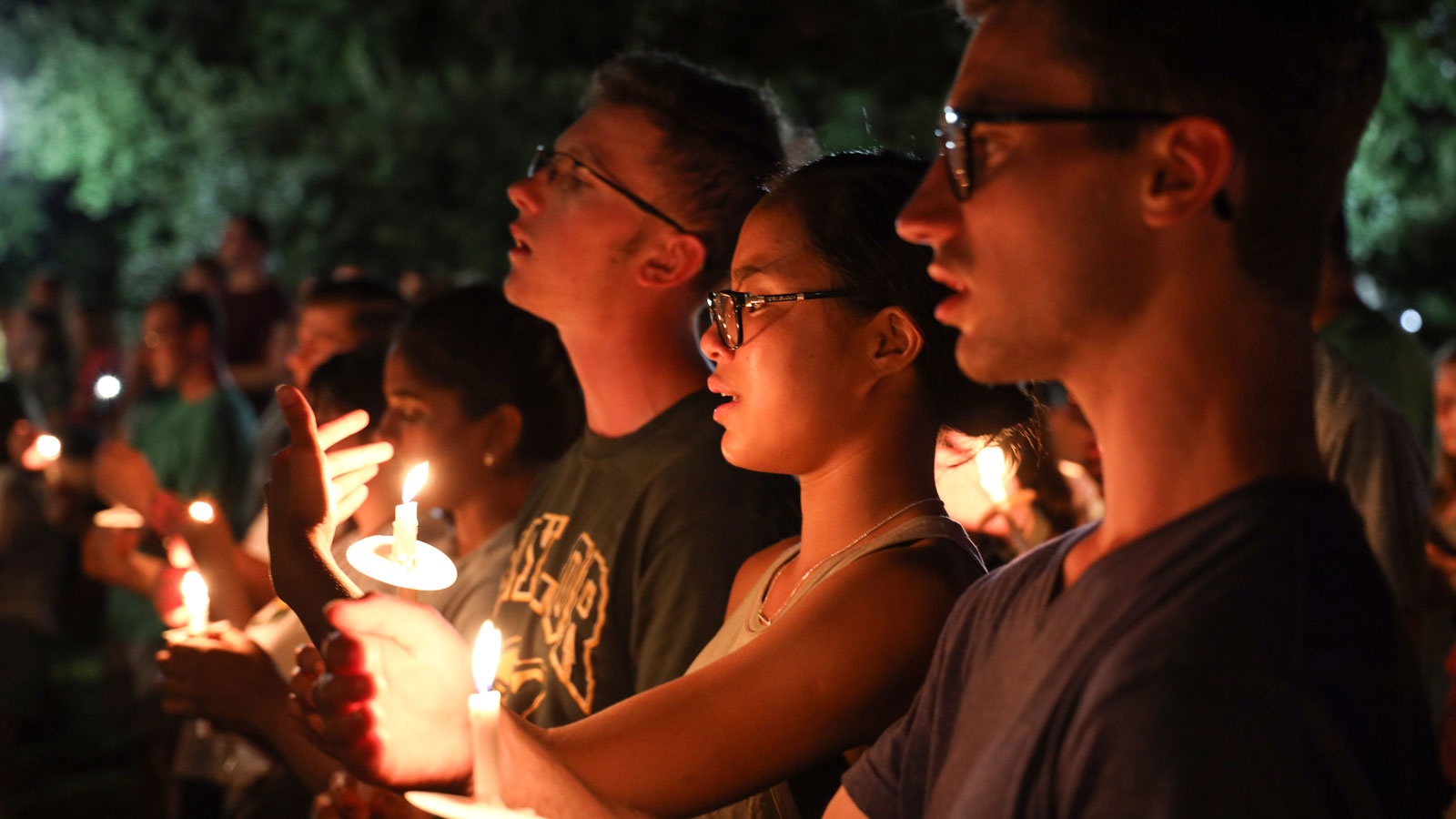A Formational Experience
Using data to demonstrate and influence how a Baylor education affects spiritual growth
Universities know a lot about the students who hope to be a part of their campuses before the students enroll. The demographics, academic records and extracurricular and leadership experiences of students are all demonstrated through the college application process. Baylor’s application for admission is thorough, asking students questions about their background and what they plan to study if accepted. Through the years, Baylor’s incoming students have represented a variety of faith denominations, hailed from all 50 states and 96 foreign countries and increased in racial diversity.
But what does their journey look like once these students arrive on campus and begin to build their lives at a Christian research university? How might those students grow in their faith? How can the University best care for their spiritual, emotional, social and intellectual wellbeing? How does Baylor best meet students where they are and illuminate a path toward growth and authentic selfhood?
These are the questions to which a group of scholars seek answers in order to enhance the Baylor experience and undergird the University’s Christian mission. The idea for a study to answer the big questions about faith and character originated from a task force established in 2016.
Darin Davis, M.A. ’95, Ph.D., is director of Baylor’s Institute for Faith and Learning and was a task force member. He says there was a need to relook at the University’s fabric as a whole and plan a way to more fully live out the University’s mission, particularly in the cultivation of students’ character and spiritual lives.
“I vividly remember a conversation in a task force meeting about the need to conduct a study about who our students are, how a Baylor education forms them and what they take with them after they graduate,” Davis says. “Everyone had anecdotes from students and alums, but there had never been a systematic effort to determine how well we were doing regarding students’ moral and spiritual formation. We realized Baylor could learn much about itself if we asked the right questions and listened to the answers.”
Data Driven
The research team comprised Kevin Dougherty, Ph.D., graduate program director and associate professor of sociology; Perry Glanzer, M.A. ’91, Ph.D., professor of educational leadership; and Sarah Schnitker, Ph.D., associate professor of psychology and neuroscience. With input from members of the original task force, they designed an interdisciplinary research project to empirically evaluate how a Baylor education affects students spiritually and morally.
“One of the odd things about American universities is that they say they hope to accomplish these wonderful moral ends in their mission statements, but they rarely ever demonstrate that they actually accomplish those ends,” Glanzer said. “I saw this research as an opportunity for Baylor to set a different example. Since my areas of research pertain to moral and faith development, and I teach a class on those subjects, this project fit squarely within my research interests.”
With the help of Baylor’s Office of Institutional Research and Testing and graduate students, the team began collecting data in the fall of 2018 using surveys and interviews of students and alumni.
“We are using what is called a mixed-method. In other words, we are using both surveys of a whole class, which is the quantitative method, as well as in-depth targeted interviews using qualitative methods,” Glanzer said.
The team employed what is known as “snowball sampling” whereby existing study subjects recruit future subjects and help grow the subject group. They acquired data over a three-year span representing Baylor undergraduate students in their first, third and final year, and alumni in their 10th year after graduation.
“We have lots and lots of data, thousands and thousands of survey responses and hundreds of interviews,” Dougherty says. “I realized this is more data than we’re going to be able to analyze and make sense of, and I saw an opportunity to engage undergraduate and graduate students to help with our research.”
To help analyze the data, Dougherty conceived of and created a course called Religion and Character on Campus that he offered last fall for the first time.
“Some of these students who are in this course could have potentially been our survey respondents or our interview participants,” he says. “They’re analyzing these data to help understand the impact of a Baylor education on students just like themselves.”
“The years that I served as a community leader in the residence hall were meaningful to my personal growth. Being able to help my residents and be a spiritual and academic example to freshmen made me realize that I have to hold myself accountable — for myself and because other people are watching.” -Dahron Mize, Senior, Sociology
Dahron Mize, a student in Dougherty’s course, agrees that the data has been informative.
“It’s been interesting to see how Baylor truly does impact its students beginning when they first enter as freshman, continuing to graduation and extending to when they’re several years removed from graduating,” Mize says.
Operating like a graduate seminar, the first month in the course was dedicated to a literature review — reading, discussing and writing about books on faith and character in college — to create a baseline of knowledge. For the remainder of the semester, the 11 students enrolled were divided into three teams to craft a publishable research article focused on a specific research question. At the semester’s end, the articles were reviewed and edited by Dougherty, Glanzer and Schnitker with the hope of publishing them in academic journals such as Christian Higher Education, The Journal of Beliefs and Values and New Perspectives in Higher Education.
One team studied belonging, evaluating how race and religion affect a sense of belonging at Baylor. The second team explored the characteristics of a Baylor education that impact faith maturity, identifying the types of curricular and co-curricular activities and programs that shape students’ growth. The third looked at the religiosity of Baylor’s student-athletes.
“It’s not one-way instruction from the professor to the student, from the graduate student to the undergraduate student. It’s a collaborative approach to learning, and it’s also experiential learning,” Dougherty says. “Using these particular data, the students are studying something that’s relevant to them. Because they know people of color, because they are people of color, because they know student-athletes, this has an incredible amount of relevance for them. Relevant data, the team experience, experiential learning, all of those things make this a unique learning opportunity.”
“When I came into Baylor as a freshman, I was definitely kind of lost as far as faith, spirituality and religion went. While I still might be more unsure than the rest of the student body, I know that I have really grown. I’m definitely feeling like God is taking care of me every step of the way. I’ve had professors like Dr. Dougherty who prayed for us before exams or just in stressful times in our lives. And I know that every single one of the little experiences like that has added up to something big in my life.” -Audrey Chisum, B.A. ’20
Audrey Chisum, B.A. ’20, was enrolled in Dougherty’s class and on the team analyzing the data to determine how athletics involvement relates to religious belief, behavior and identity at Baylor.
“I’ve learned that the sky is the limit when it comes to research,” Chisum says. “I came into this class a little bit wary being an undergrad in a mixed undergraduate and graduate course, but I’ve had great support from the graduate students and from Dr. Dougherty. I’ve really learned a lot behind the scenes questioning the Baylor student body, things that I wouldn’t have known were happening unless I directly received the survey.”
David Jung also took the course and agrees that it was a transformational part of his Baylor education.
“The unique setup of the course helped me learn a lot about writing a paper that can be published. The integration of graduate students really challenged me to stay on top of my work as well as bring results that are graduate level,” Jung says.
New Applications
Along with providing students with a transformative research opportunity, the findings in the Faith and Character Study have also informed how Baylor ministers to students and engages them through the department of student life and University Chapel. The survey data showed that 90 percent of Baylor students identify as Christian but only two-thirds of those students indicated that they planned to be involved with their faith while at the University. Further, the study demonstrated that awareness of scriptures and biblical literacy is not as high as it probably was two decades ago.
“Coming into Baylor I knew I wanted to attend a Korean Baptist Church because my denomination is Baptist. The person most influential in my faith development has been my pastor Jangho Jo from Korean Church of Waco. He really helped me to understand what it means to live out my faith and what it means to be holy.”-DAVID JUNG, Senior, Sociology
“The survey is a really important resource to us right now,” University Chaplain Burt Burleson, B.A. ’80, D.Min., says. “All of that information combined with the diversity in denomination, ethnicities and religious differences that may come with denominational descriptors or liturgical differences experienced by students changes the way we think about what we present in one room in Waco Hall and how we present it. So, we’re beginning to explore how we can move people into significant experiences of learning and discipleship, and inspiration and comfort, and all the things that a Chapel service can be within the context of community.”
As the oldest tradition in American higher education, the concept of academic chapel has evolved over time. Benjamin Leavitt, M.A. ’18, is a history doctoral candidate who is studying the history of religion in American higher education. Through his research in the Texas Collection, Leavitt has worked with the Department of Spiritual Life to help bring context to the changes in Chapel at Baylor over the decades. Like other institutions of higher education, Baylor’s Chapel has also taken on a variety of formats and even names since its inception in 1845. Throughout its history, it has been called Chapel, Chapel-Forum, University Forum or just Forum, and today, it is listed in the schedule of classes as University Chapel and is known by its original, simplified name: Chapel.
For approximately the first 85 years, Chapel modeled that of any university — secular or Christian — taking the approach of a morning prayer led by the president. From 1902 to 1931, President Samuel Palmer Brooks upheld this practice, leading prayers in the chapel in Carroll Library until that facility burned down Feb. 11, 1922. Chapel was then held in a temporary barn-like structure where Pat Neff Hall now stands before it eventually moved to Waco Hall in 1930.
Pat Neff, who succeeded Brooks as president in 1932, took a different approach to Chapel. He began the practice of incorporating a variety of speakers from preachers to politicians to rodeo performers and was the last president to regularly lead Chapel. There have been six full-time chaplains in Baylor’s history. W.J. Wimpee was the first when he was given that title in 1951, and he held the position nearly uninterrupted until his 1989 retirement.
“The 1960s were a really important era for whether colleges chose to keep chapel services or not,” Leavitt says. “In 1969, the Baylor Student Congress voted to institute a $15 per semester fee in order to raise $75,000 a year to bring in better speakers. In the 1960s, while other schools were basically cutting down the Chapel requirements or ditching the requirements, Baylor students voted to institute a fee on themselves in order to finance bringing in better, more nationally and internationally renowned speakers, which is basically what we have now.”
Today, students have options for their Chapel experience. One option is a format created as a response to COVID-19 and the University’s need to limit large gatherings. Matthew Aughtry, assistant director for worship, says the pandemic presented an opportunity to form virtual experiences.
“We were already in the process of making changes to what Chapel was going to be in the 2020-2021 academic year. We were already saying we need to lean more into the biblical narrative because of the Faith and Character Study,” Aughtry says. “We also learned from the study that we need to engage local pastors because the data showed that friendships with people of the same faith and relationships in local churches are the most formational for Baylor students.”
Aughtry, whose background is in film and theology, stood at the ready to shift Chapel into a digital space in response to the pandemic.
“I believe that, through the medium of film and video, the Gospel can be communicated,” he says. “There’s this great part in the Letter to the Romans where Paul says, ‘I really want to see you, I really want to come to Rome above everything else, but it’s not possible to get there right now.’ What does he do? He doesn’t give up. He sits down, and he writes a letter. And that Letter to the Romans is possibly the most important letter in the history of humankind. He wants to be face-to-face, and I think that’s the right thing that we want to worship together. But something like a letter or a film that’s been thoughtfully produced allows us to contemplate together. And there’s power in a community contemplating the same thing together — in fact, that shared contemplation creates community, it creates culture.”
This semester, though students cannot gather for the large University Chapel in Waco Hall, they can experience in-person Chapel through alternative options for one of the two required semesters of Chapel credit. Informed by findings from the Faith and Character study, the Spiritual Life team created Chapel alternatives that fall under two categories — Chapel Prayers and Chapel Studies — and allow small groups to meet in traditional, in-person settings in various locations across campus.
Chapel Prayers are liturgies, or short daily services, designed to help students experience prayer in community. They typically include singing, meditations and scripture readings led by resident chaplains and student leaders. Chapel Studies are designed for students who are interested in deepening their faith in God through topical studies. Some sections, for example, focus on spiritual disciplines while others explore the intersection between faith and vocational paths. Currently, Chapel Studies sections are being offered to address topics such as faith and sports, faith and the veteran’s life and faith and the healing professions, with plans to develop more discipline-specific options down the road.
“Chapel Prayers can help students develop a habit of daily worship that becomes a key part of their spiritual life while Chapel Studies are great for students who are seeking to understand how the Christian faith animates, inspires and empowers their daily lives,” Assistant Director of Chapel Carlos Colon, M.M. ’93, says.
According to Burleson, the Faith and Character Study and shifting to using more video for University Chapel during COVID-19 have opened more opportunities to refine Chapel moving forward and cultivate a rich spiritual life experience for Baylor students.
“It’s really important that we keep stepping into our mission in these kinds of ways. That’s actually a crucial part of the mission isn’t it, to continue to grow in breadth and depth with regards to how we faithfully manifest our calling as a university,” Burleson says. “I want to see us stepping into our mission creatively as we keep seeking to find ways for faith to animate everything we do. If we can step through this door into this era of change, I think we’re going to create ways of doing Chapel and experiencing Chapel that are more and more impactful for students.”
